The allure of Husky dogs as loyal and beautiful companions has led to their increasing popularity as pets. However, a pervasive misconception in the world of Husky care revolves around shaving these majestic creatures, often with the misguided belief that it benefits their comfort and well-being, particularly in warm weather. In this article, we delve into the intricate world of Husky coats, debunk common myths, and explore the potential consequences of shaving a Husky, all while shedding light on responsible alternatives and scenarios where shaving may be necessary for the welfare of these magnificent dogs.
What Happens if You Shave a Husky?
Shaving a Husky can have unintended and potentially harmful consequences. Huskies possess a double-layered coat designed to regulate their body temperature in cold and hot climates. Shaving disrupts this natural insulation system, making them vulnerable to sunburn, skin infections, and heatstroke. Furthermore, the coat may not grow back correctly, leading to irregular regrowth patterns. It’s essential to avoid shaving Huskies unless recommended by a veterinarian for specific health reasons and instead focus on proper grooming and climate-appropriate care to ensure their well-being.
The Popularity Of Husky Dogs As Pets
The popularity of Husky dogs as pets has soared in recent years. These wonderful and energetic canines have captured the hearts of many dog enthusiasts worldwide. Known for their captivating blue eyes, thick double coats, and playful personalities, Huskies are aesthetically appealing and make fantastic companions for the right owners.
One of the factors contributing to their popularity is their resemblance to wolves, which often draws people to their unique appearance. Additionally, Huskies are known for their friendly and outgoing nature. They tend to get along well with children and other pets, making them an excellent choice for families.
Moreover, their history as working dogs in cold climates, especially as sled dogs, has garnered them a reputation for being hardworking and resilient. This heritage appeals to individuals who appreciate their strong and determined spirit.
The rise of social media platforms has also played a significant role in the popularity of the Huskies. Their photogenic looks and playful antics make them frequent stars on Instagram, Facebook, and TikTok, attracting a dedicated fan base.
However, it’s important to note that Huskies are not the ideal breed for everyone. Their energetic nature requires plenty of exercise and mental stimulation, and their thick coat demands regular grooming. Prospective Husky owners should be prepared to invest time and effort into their care to ensure a happy and healthy life for these beloved pets.
In conclusion, the popularity of Husky dogs as pets can be attributed to their captivating appearance, friendly disposition, and role in popular culture and social media. While they may not be the right fit for every household, Huskies can become cherished family members and loyal companions for those willing to meet their unique needs.
The Unique Double Coat Of Huskies
The unique double coat of Huskies stands as one of the most distinguishing features of this captivating breed. This remarkable coat structure, composed of an outer coat (guard hairs) and an inner coat (undercoat), serves many purposes, making it an essential aspect of Husky physiology and their ability to thrive in various climates.
Dual-Layered Structure: The Husky’s coat comprises two distinct layers, each with its characteristics and functions. This dual-layered structure sets Huskies apart from many other dog breeds and is a testament to their adaptability.
Outer Coat (Guard Hairs): The outer coat consists of long, coarse guard hairs that are visually striking and serve vital protective functions. These guard hairs act as the first line of defense against the elements. They are waterproof and repel rain and snow, keeping the inner coat dry. Additionally, they act as a barrier against environmental hazards such as thorns, twigs, and other potential irritants.
Inner Coat (Undercoat): Situated beneath the protective layer of guard hairs lies the inner coat, a soft and densely packed layer of fur. This inner coat plays a crucial role in thermoregulation. It acts as insulation by trapping warm air close to the Husky’s body during cold weather. This natural insulation mechanism helps Huskies withstand frigid temperatures, making them well-suited for colder climates.
Temperature Regulation: One of the most fascinating aspects of the Husky’s double coat is its adaptability to temperature fluctuations. In cold weather, Huskies can fluff up their coat, creating an additional layer of warmth. Conversely, in hot weather, they shed their undercoat, allowing them to release excess heat and maintain a more relaxed body temperature. This adaptability ensures their comfort and well-being across various environmental conditions.
Shedding Seasons: Huskies are notorious for heavy shedding, particularly during shedding seasons. These seasons typically occur twice a year as they transition between seasons. Shedding is a natural process that helps them prepare for temperature changes by shedding their thicker undercoat in preparation for warmer weather.
Coat Colors and Patterns: Beyond their functional attributes, the Husky’s double coat also contributes to their captivating aesthetics. Huskies come in various stunning coat colors and patterns, including black, gray, red, agouti, and more. These variations are often accompanied by unique facial masks, striking eye colors, and distinct coat markings.
Coat Maintenance: Proper care and maintenance of the Husky’s double coat are essential for their health and comfort. Regular brushing helps manage shedding, prevents matting, and keeps the coat in good condition. Bathing should be done sparingly to avoid stripping the coat of its natural oils, which are crucial for its overall health.
What Are The Effects Of Shave A Husky?
Shaving a Husky’s double coat can have several effects, and it’s essential to be aware of these consequences before deciding to shave your Husky. Shaving is generally discouraged for Huskies due to the breed’s unique coat and role in regulating body temperature and protecting the skin. Here are the potential effects of shaving a Husky:
- Temperature Regulation Disruption: One of the most significant effects of shaving a Husky is disrupting their natural temperature regulation system. Huskies have a double coat that helps them stay warm in cold weather and cool in hot weather. Shaving removes this insulation, making them more susceptible to temperature extremes. In hot weather, they can overheat; in cold weather, they can become uncomfortably cold.
- Sunburn and Skin Problems: The outer guard hairs of the coat protect against harmful UV rays from the sun. Shaving Huskies increases their risk of sunburn, especially for those with lighter-colored fur or pink skin. Additionally, environmental factors make shaved skin more susceptible to irritations, rashes, and abrasions.
- Increased Shedding: Paradoxically, shaving can sometimes lead to increased shedding. When a Husky’s coat is shaved, it can stimulate the hair follicles, causing more pronounced shedding during regrowth. This can result in a messier home and more grooming work.
- Coat Irregularities: Shaving may result in irregular regrowth patterns. The coat may not grow back uniformly, and there can be variations in texture and color. This can affect the Husky’s appearance and the functionality of the coat.
- Behavioral Changes: Shaving can make Huskies feel uncomfortable and anxious. The sudden loss of their natural insulation can lead to behavioral changes, including restlessness, agitation, excessive scratching, and anxiety.
- Increased Vulnerability to Skin Issues: Shaved Huskies are more vulnerable to skin problems like dryness, itching, and infections due to the loss of the protective barrier provided by their coat.
- Potential Long-Term Damage: Shaving a Husky’s coat can cause long-term damage to the coat’s quality and health. The coat may not return to its previous state, leading to ongoing grooming and care challenges.
What Are The Benefits Of Shaving A Husky?
Shaving a Husky’s double coat is a topic that often generates debate and confusion among dog owners. While there may be some misconceptions regarding the potential benefits of shaving a Husky, it’s essential to understand that, in most cases, shaving is not recommended, and there are limited to no benefits to this practice. Instead, it can have several drawbacks and potentially harmful consequences for your furry friend.
Here’s a more in-depth look at why shaving a Husky’s coat is generally discouraged:
Temperature Regulation:
One of the primary functions of a Husky’s double coat is to help them regulate their body temperature. The inner undercoat provides insulation, trapping warm air close to the body in cold weather, while the outer guard hairs act as a barrier against extreme temperatures. Shaving disrupts this natural insulation, making it more vulnerable to temperature extremes. In hot weather, it can lead to overheating; in cold weather, it can result in discomfort, shivering, and even hypothermia.
Sun Protection:
The outer guard hairs of a Husky’s coat serve as a natural sunblock, protecting their skin from harmful UV rays. Shaving removes this protective layer, increasing the risk of sunburn, particularly for Huskies with lighter-colored fur or pink skin.
Skin Problems:
Shaving can cause skin problems, including irritation, rashes, and abrasions. Without the protection of their coat, Huskies’ skin becomes exposed to environmental factors that can harm their delicate skin.
Coat Damage:
Shaving a Husky’s coat can damage the texture and regrowth of the fur. After shaving, the coat may not grow as thick or uniformly, leading to irregular regrowth patterns. This can result in an aesthetically unpleasing appearance and potential long-term damage to their natural coat.
Increased Shedding:
Paradoxically, shaving can sometimes lead to more pronounced shedding. When the coat is shaved, it can stimulate the hair follicles, causing increased shedding during regrowth.
Behavioral Changes:
Shaving can make Huskies feel uncomfortable and anxious. The sudden loss of their natural insulation can lead to behavioral changes, including increased restlessness, agitation, and excessive scratching as they attempt to cope with the changes to their coat and body temperature regulation.
Bottom Line
The bottom line is that shaving a Husky’s double coat is generally not recommended unless it is deemed medically necessary by a veterinarian or for specific situations like severe matting or surgery. Huskies have a unique coat crucial in regulating their body temperature, protecting their skin, and providing insulation. Shaving can disrupt these functions and lead to potential issues such as overheating, sunburn, irregular coat regrowth, increased shedding, behavioral changes, and more.

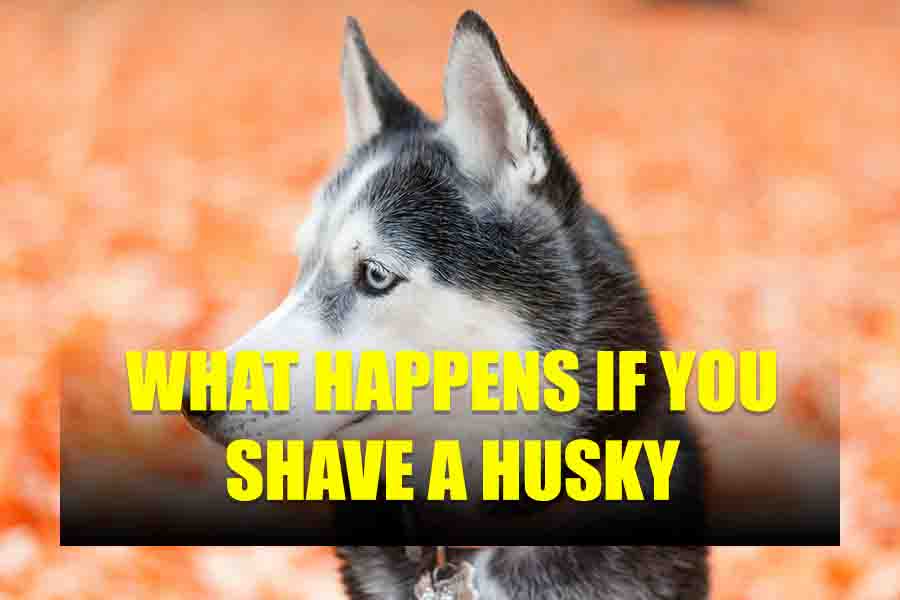
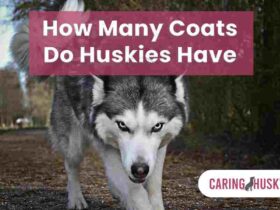
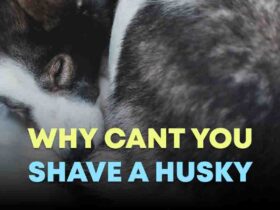
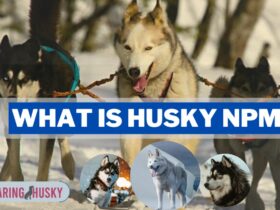
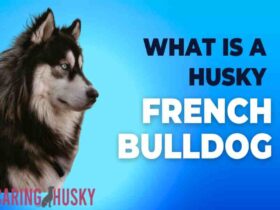
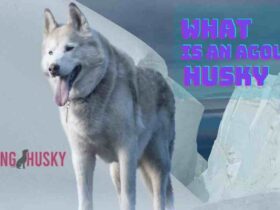
Leave a Reply